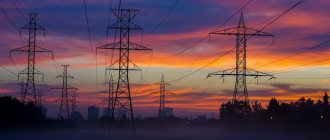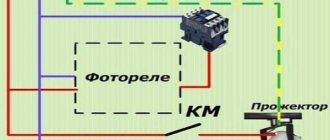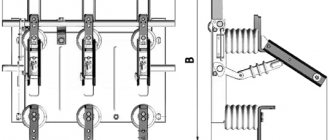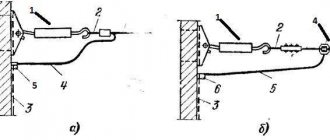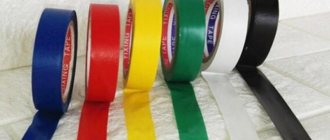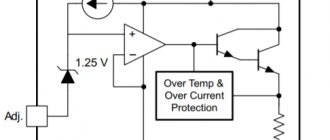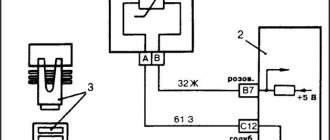Wood material has been used to construct power lines since the dawn of electrification. Since wooden power line supports are very cheap, they have not lost their relevance in modern conditions. Natural wood supports can be used in any, even the most severe climatic conditions. The wood can withstand low temperatures, strong winds, and is highly resistant to moisture. Therefore, despite some physical disadvantages of this material, many organizations servicing electrical networks prefer wooden poles.
Choosing wood for making supports
The service life of wooden supports largely depends on the selected material and production technology. Most often, producers use Scots pine. Pine has a special wood structure that lends itself well to impregnation with modern antiseptic materials. This compares favorably with larch or spruce, which are difficult to impregnate with protective solutions.
Another useful quality of pine is its excellent mechanical properties. The trunks of these trees, as a rule, are smooth and long, and can bend under heavy loads. In the northern forests, pine wood is denser, so its harvesting is carried out mainly in these areas.
For wooden supports, wood harvested in the autumn-winter period is best suited. At this time, there are no juices in the tree, so the moisture content of such wood is much lower than that of a freshly cut summer forest. Additional drying costs are significantly reduced and the entire production becomes cheaper.
Wooden supports are made from the butt part of the pine tree, that is, from the thick lower part of the log adjacent to the root. There are practically no branches in this place, and the structure of the wood is more uniform and durable compared to the top of the tree. After selecting pine logs, the bark is removed from them, and then they are dried.
Support installation process
The installation of supports begins with the fact that the structures need to be placed at the installation points. Afterwards, the supports are assembled in accordance with the created technological map. During installation, lifting equipment is used to lift the stand vertically and will hold it until it is completely secured. Installation can be carried out in the ground, and concrete supports can also be fixed to the foundation. The choice of a specific method depends on the type of support, soil, terrain and operating conditions.
If the installation method in the ground is chosen, then in this situation the racks are mounted according to the following principle:
- the route is marked, the mounting points for supports are allocated;
- preparing the area for installation;
- using special equipment, you need to make wells of the required depth (if lifting equipment cannot be used, then the racks can be installed by helicopter; in very rare situations, manual installation is allowed);
- installation of crossbars if necessary;
- placing racks in wells (before lowering concrete racks into the ground, the surfaces that will be in the soil should be treated with special waterproofing, which will prevent the destructive influence of groundwater);
- the soil is backfilled and compacted, and if necessary, the voids can be filled with concrete mortar;
- The line is being connected.
To carry out installation on concrete supports, special manholes (claws) are used.
With their help, you can easily climb without the use of special equipment. Of course, any construction and installation activity must be carried out in accordance with technical safety standards. In addition to installation in the ground, there is also a method of fixing it in the foundation. In this case, the power line rack can be installed on a reinforced concrete base, which is poured immediately at the installation point or transported to the site ready-made. The support is mounted on the foundation using a flange connection. Also, the base itself must first be treated with mastic, which will protect it from moisture.
Removing bark and drying wood
Using a special machine, not only the top bark is removed from the trunk, but also the phloem, which is the subbark or inner bark of the tree. This procedure is mandatory because it ensures the unhindered release of moisture from the wood. Due to this, the further drying process is significantly accelerated.
During bark removal - debarking - the outer layer of wood should be minimally affected by the machine. Experts call this layer sapwood, and it is this layer that will be impregnated with antiseptic in the future. If you cut off all the sapwood, the future post will not be reliably protected from rotting.
Materials
Wooden power line supports are made from coniferous trees, where the resin is a natural preservative and antiseptic. Northern pine, which has high strength and elasticity, is in greatest demand. The problems that reinforced concrete pillars have due to their fragility are never created by wooden supports (photo below - loading of finished products).
For impregnation, shale or creosote oil is used, as well as mixtures containing copper, chromium, and arsenic. Additionally, the supports are treated with antiseptic agents (fire retardants). This allows the pillars to be buried directly into the ground, without concrete steps, which increases their service life.
Products made from pine have the highest absorbency. If spruce and larch are used for supports, it is much more difficult to saturate them.
Impregnation allows you to bury the pillars directly into the ground. Only here it is necessary to additionally protect the ends with protective paste or covers. It is important to dry the wooden support for up to 3 months before impregnation. Fastening to reinforced concrete supports leads to splitting of the wood under the wire rod bands.
Important! To make pillars, use the lower part of the tree (butt), where there are fewer branches and a more uniform structure.
Impregnation and fixation of workpieces
Dried wooden posts are treated with impregnation. For this, sealed autoclaves are used, and the method itself is known as VDV - vacuum - pressure - vacuum.
The essence of the method is as follows:
- At the initial stage, a vacuum is created inside the autoclave, drawing out excess moisture and expanding the wood pores.
- Next, an aqueous antiseptic solution enters the chamber, after which pressure is built up inside it, which can reach up to 14 atmospheres.
- High pressure acts on the antiseptic, ensuring deep penetration of the solution into the wood. A certain level of pressure is maintained until the wood is saturated with the required amount of antiseptic.
- At the end of impregnation, the remaining solution is drained from the chamber.
- A vacuum is again created inside in order to evenly distribute the absorbed antiseptic inside the wood.
Advantages
Wooden support will never be written off due to the following advantages:
- Low cost.
- Light weight.
- When a wooden pole falls, the weight of which is 3 times less than a reinforced concrete one, it hangs on the wires without the “domino” effect characteristic of heavy poles.
- Indispensable in areas with increased seismic activity.
- Better withstand wind loads.
- High dielectric characteristics.
- Long service life if properly manufactured (up to 40 years).
- Do not require special maintenance.
Installation of wooden power line poles
In most cases, wooden supports are not installed directly into the ground, but are used in conjunction with wooden or reinforced concrete attachments - stepchildren. They are interconnected and form a structure of increased strength, ensuring reliable operation of the overhead power line.
The usual installation of wooden power line poles using stepsons is carried out by connecting the main post with one or two attachments with clamps or special bands. At the junction of wooden parts, planes 10 cm wide and 1.5-1.6 m long are cut off. At the end of each plane, a perpendicular notch is made.
The joints of the joints are made tight, without any gaps. Lines are drawn in advance for the bandages, and small recesses are made for the bolts for fastening the bandages. All irregularities around the circumference of the post are eliminated in advance, for better tightening of the parts. The installation of bandages is done in two places at a distance of 20 cm or more from the edge of the support. The distance between them is 1.0-1.1 meters.
The design of a standard bandage includes several turns of soft galvanized steel wire with a diameter of 4 mm. If non-galvanized wire is used, its diameter should be at least 5-6 mm. The number of turns of a particular bandage depends on the diameter of the wire used. After winding the turns of wire, the space between them is pulled apart with a special crowbar, after which they are twisted together. Then the support is turned over and the same twist is performed on the opposite side.
Features of concrete supports
Concrete racks are used for the creation, reconstruction, and repair of high- and low-voltage power lines. The most important positive qualities of reinforced concrete structures include:
- excellent resistance of the material to corrosion;
- the ability to operate supports at ultra-low negative temperatures, which can reach -55 degrees C;
- possibility of installation in an environment with high seismic activity;
- resistance of the material to aggressive environmental influences;
- if the surfaces of reinforced concrete supports have undergone special protective treatment, then their service life can be 70 years;
- the supports are not afraid of fires;
- reinforced concrete structures are the optimal price/quality ratio.
The main disadvantages of concrete supports are that, as a result of temperature fluctuations, chips and cracks may appear on their surface. Also, the impressive mass of products creates some difficulties during transportation and installation. These supports are used when creating lines with voltages in the range of 0.4-1150 kV. The weight and parameters of the supports largely depend on these indicators.
General requirements for power lines with voltage up to 1 kV
When installing power transmission line supports on private land, technical requirements must be observed. To check compliance, you must be guided by Article 2.4 of the Electrical Installation Rules, with operating voltages up to 1 kV. The list of standards is as follows:
- mounted poles should not obstruct access to buildings and courtyards;
- supports must be equipped with protective mechanisms against possible collisions with vehicles;
- when power lines are located in a forest area, there is no need to cut down a clearing, but you must maintain a minimum distance to trees - 1 meter;
- You can use only those structural elements and supports that have anti-corrosion and fire-resistant properties.
IMPORTANT! Before sending an application for approval and connection of power lines, you need to make sure that the requirements are met. Otherwise, the application will be rejected and the process will be delayed.
Package of documents
To install and connect power line supports, the owner needs to collect the following documents:
- passport;
- document of ownership of the site;
- TIN;
- a list of electrical devices that will be constantly used by the owners (indicating the power);
- calculation of the network load;
- technical plan of the site indicating the nearest power transmission line supports and the proposed locations of new poles.
IMPORTANT! If there are communications (gas or pipelines, sewerage) on the ground near the future location of the supports, they must be displayed on the technical plan.
Classification of supports by functional purpose
According to their design and technological purpose, power transmission line supports are divided into the following types:
- intermediate – the most popular and widely demanded type of product, which is designed to maintain conductors at the design height. When designing and building high-voltage lines, intermediate support elements make up 80–90% of the total number of products used. In this case, the intermediate supports are intended solely to support the wires and do not bear the load from the tension of the wires. The amount of permissible load depends on the model of the supporting elements, which are accepted for installation during individual calculations. Installation of intermediate supports is carried out on straight sections of the line. Steel and reinforced concrete products can be used at low temperatures of negative temperatures down to – 65 ºС, allowing the use of elements in the northern regions of the country;
- transitional or anchor - are used at points, network nodes, where the presence of barriers of natural origin or engineering structures requires a change in topology. These may include reservoirs, rivers, ravines, hills, infrastructure facilities, etc. The supports have increased dimensions, which allow them to withstand significant loads caused by the tension of the wires. The design of such products is characterized by increased rigidity;
- corner – products which are installed at the turning points of the high-voltage line. Angular intermediate elements are used for small rotation angles - up to 30 degrees. Above that, full-fledged corner anchor structures of supporting products are used, allowing them to withstand the forces of constant tension of wires and cables of adjacent spans;
- end - products, the installation of which is carried out at the starting and ending points according to the power line installation project. The wires from them go to the substation portals. Elements of this type, as a rule, perceive a one-sided load from the tension of the conductors;
- transpositional - supports of a special type, which are used if there is a need to organize branches or change the order of conductors running as part of an overhead line. Also, special products are used in cases where the line needs to be strengthened to increase the anti-wind load or when two or more cross power lines intersect.
Is approval required for installing poles?
To place a power line support and connect a private home to electricity, the owner must obtain permission. To coordinate the installation of electricity poles at the dacha, related equipment and further network connection, you need to contact the energy sales company at the site address.
The application is drawn up in free form. It submits a request for the employee to leave. This is required to verify compliance with regulations.
A sample application is available here.
debarking
The bark and phloem are removed using a specialized machine. Only after this the trunk begins to dry. Sapwood should be touched to a minimum, since it is this wood that is well saturated with an antiseptic. If the entire top layer is cut off, the durability of the support will be greatly reduced due to the fact that it will be more susceptible to rotting. Then the wooden support, the dimensions of which meet the requirements, is sorted according to its intended purpose. Some manufacturers dry the wood without removing the bast, which makes it possible to prevent cracking of the wood. Then the bast is removed, as it will interfere with the impregnation process.



